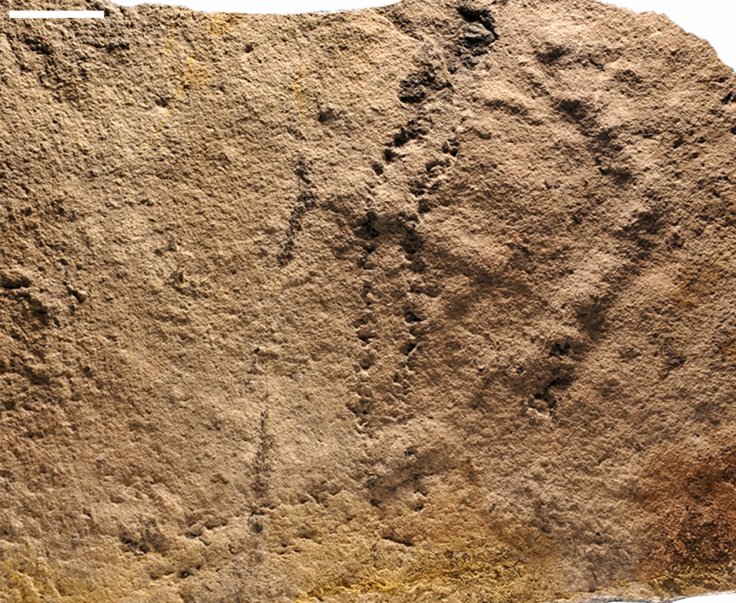
A team of researchers at the Virginia Tech College of Science has discovered oldest footprints ever found which are expected to date back at least 540 - 550 million years. The research led by lead scientist Shuhai Xiao found the footprints in a small chunk of sediment rock in a shallow sea bottom in China. The tiny tracks, millimeters in width were supposed to have made by an unknown bug-like creature with a size less than a thumb.
The research report published in Science Advances reveals that the foot rail is only a few inches long, and it is not bigger than an average hand palm. Experts believe that learning more about these ancient footprints will help to determine when and how legs and limbs evolved.
"We were trying to answer the question 'when did animals begin to have appendages, such as legs and leglike structures?' The formation of legs helped animals to change the world. Animals use legs and limbs to move sediments, to help mate, to feed, to fight, and, of course, to travel," said Shuhai Xiao, a professor in the Department of Geosciences at the Virginia Tech College of Science.
Before this pathbreaking discovery, the oldest footprints ever found was between 540 million and 530 million years old, in the early Cambrian Period. The newly discovered footprints are estimated to be 10 million years older than the previously known oldest footprints.
"Many animals, from bumblebees to bristle worms, have legs or leglike appendages. Some have a few appendages, others, such as centipedes and millipedes, have hundreds, but all have an even number of appendages placed symmetrically on both sides of the body. Appendages come in different forms, some are jointed legs as in bumblebees, and others are simple outgrowths of the body," added Xiao.
Xiao also revealed that his team has only found the footprints, and they are not sure about the creature which made these marks. As per Xiao, animals in the ancient age did not evolve hard skeletons and as a result, the likelihood of these creatures' remains getting preserved is slim.
Xiao and his team are now planning to visit the site again to search for more evidence of early animals.
In 2015, another research team which was also led by Xiao had discovered fossils of kinorhynch worms dating back 530 million years. After the discovery, Xiao revealed that the new fossil is capable of telling scientists more about how and why body segmentation evolved many times among arthropods and several other groups of animals.








